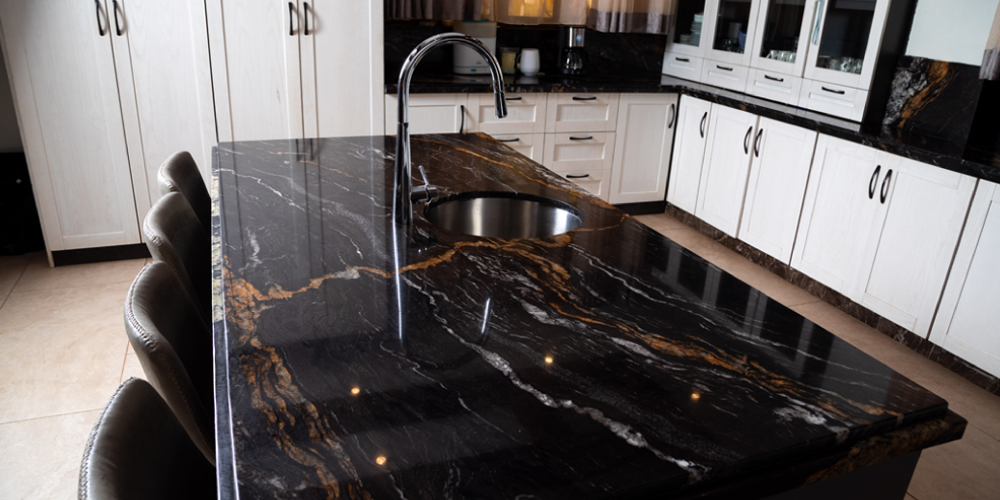Get The Right Edge For Your Kitchen Countertop

As a homeowner, it’s natural that you’ll obsess over the details of your countertops. Granite or quartz? Black or white? Dramatic veining or plain? Matte or smooth? Color, texture, and thickness are the details most homeowners give the most attention to. However, your countertop edges are one of the most prominent features. It’s what you, your friends, and your family will gather around, sit next to, lean against, and bump into every time you’re in the kitchen. Paying attention to this crucial detail means your kitchen design will look complete.
What type of countertop edge should you choose for your kitchen? The choice you make should reflect the type of material that will be used to create your countertop, as well as your personal taste and style preferences.
Here are some common types of countertop edges that you can pick from:
- Square edge: Square edges come to a 90-degree point at their corners. Simple, yet sophisticated, this is one of the most popular designs that works well with contemporary kitchens. Although some prefer their simplicity, others say square countertops can look plain and boring. Such simple designs make it easy to create pleasing, clean lines in any room. Square edges are also ideal for people who think a thicker edge will leave more space on each side of their counters.
- Eased edge: These options add more roundness to square countertop edges for an even softer look while remaining clean and simple. This edge is round, and it’s cut into your counter so that it blends with your surface without being obvious. In addition to being an aesthetically-pleasing option, an eased edge countertop is great for safety.
- Bullnose edge: A bullnose countertop edge offers a rounded countertop look. This countertop edge is fully rounded from top to bottom and is popular in families with young children. It tends to make the countertop look a little thinner, so some homeowners choose a half bullnose, which only is round on the top.
- Ogee edge: An ogee edge is often found in more traditional kitchen designs. This edge style has a gentle S-curve to it, giving countertops an intricate look. It has a nice fluid shape to it, starting at a point and gradually turning into a smooth curve. A drawback is that it is slightly harder to keep clean since crumbs and dust can gather in the grooves.
- Bevel edge: A beveled edge has an angle that is less than 90 degrees. Most beveled edges are 45 degrees. It’s another great option for making a countertop edge less sharp. If you want your countertop to appear as if it extends beyond its actual size without taking up too much space, beveled edges are probably what you’re looking for.
- Waterfall edge: Unlike any of the other edge choices, a waterfall edge is a great choice if you’re working on a modern or contemporary kitchen design. You extend the countertop downwards at its ends, so the material appears to flow downward, approaching (or sometimes even touching) the floor. However, it’s one of the costlier options because it requires additional material and fabrication.
When it comes to choosing the edge profile, you need to carefully consider the material you want to use, the budget you’re willi ng to spend, and your design intentions (traditional, classic, minimalist, contemporary etc). This list is just a handful of some of the most popular options for countertops. You can also get creative with your edge profiles and go with a custom option from Elegant Fittings.
Visit our showroom located on Woodvale Lane, Runda, behind Ciata City Mall along Kiambu Road to bring your design vision to life!
